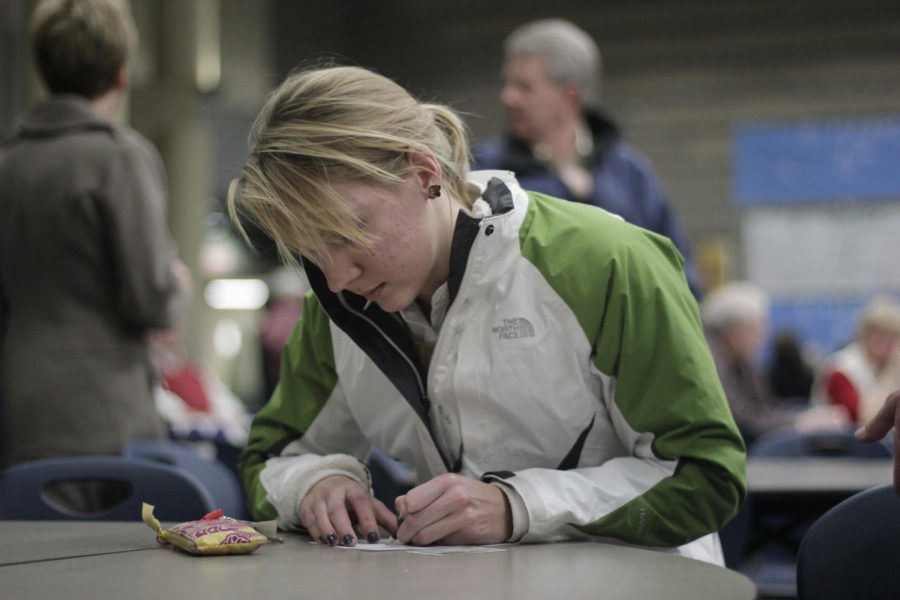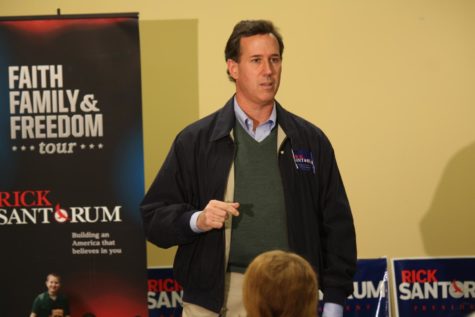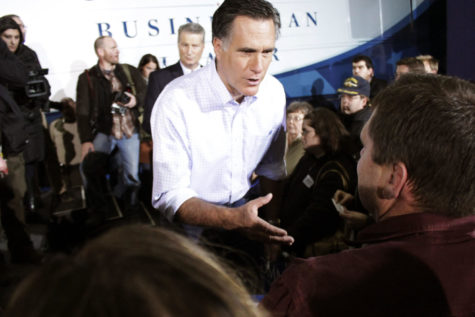ISU professors say youth votes are important during caucus
Photo: Nicole Wiegand/Iowa State Daily
Jessica Jacobson, 17, of Ames, registers to vote for the first time at the Ames Ward 3, Precinct 5 caucus at Ames Middle School on Tuesday, Jan. 3. Jacobson attended the caucus with three of her friends who were also voting for the first time.
January 2, 2012
Since the Iowa caucuses were moved forward to Jan. 3 in order for Iowa to remain first in the nation, many are wondering if the state can see a large number of youth voters like it did in 2008.
“I think it’s hard to predict,” said Dianne Bystrom, director of the Carrie Chapman Catt Center for Women in Politics. “There were the same kind of worries and speculations about students [in 2008] and actually what happened in 2008 is student participation in the caucuses actually increased.”
According to The Center for Information & Research on Civic Learning & Engagement, 15 percent of caucus voters in 2008 were between the ages of 17 and 24, compared to the 5 percent that voted in 2004.
“I think what 2008 showed is that when students are home and are not on their college campus it presents a challenge for campaigns,” Bystrom said.
President Obama faced the same issue in 2008 when he won the Iowa caucuses while most young voters were at home on break. Obama used text messaging and the Internet to keep youth voters energized and interested.
“Networking is what makes it possible to have relatively high youth, and for the most part that means first time participants show up at the caucuses,” said Mack Shelley, a political science professor at Iowa State. “Ron Paul and Mitt Romney… the two of them are in a really good position to take advantage and mobilize their supporters.”
Bystrom agreed, saying that candidates must encourage young people to vote.
“If the campaigns are organized to encourage young people to come out, they can do so with the youth in their home town communities,” Bystrom said.
CIRCLE statistics show that 87 percent of Democrats who were voting for the first time in the 2008 caucuses were between the ages of 17 and 24. This brought a substantial amount of media attention to the importance of capturing the youth vote, which helped the momentum of Obama’s national campaign.
“You have to have something fresh on the menu that is going to make this look like an attractive opportunity,” Shelley said. “Otherwise, unless you’ve been there done that for the last 20 years, it’s really an alien experience, you have to have some kind of an attraction.”
Bystrom and Shelley both said they believe in the importance of keeping youth involved with not only the current election, but for elections in years to come as well.
“I think it is exactly what you need to broaden the base of a democracy and get as wide spread of a participation as you can especially from folks who are so young they haven’t had much exposure yet,” Shelley said.
Iowa residents can register to vote the day of elections as long as they are able to provide proof of residency and identification. Iowans have been able to register on the day of an election since Jan. 1, 2008.









